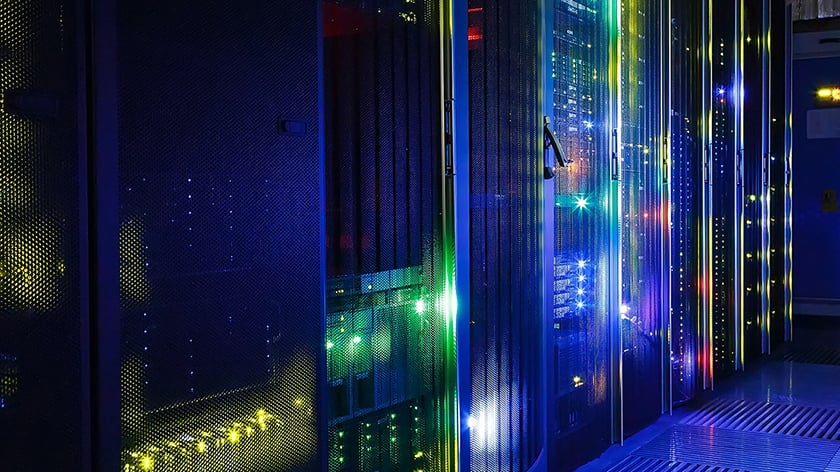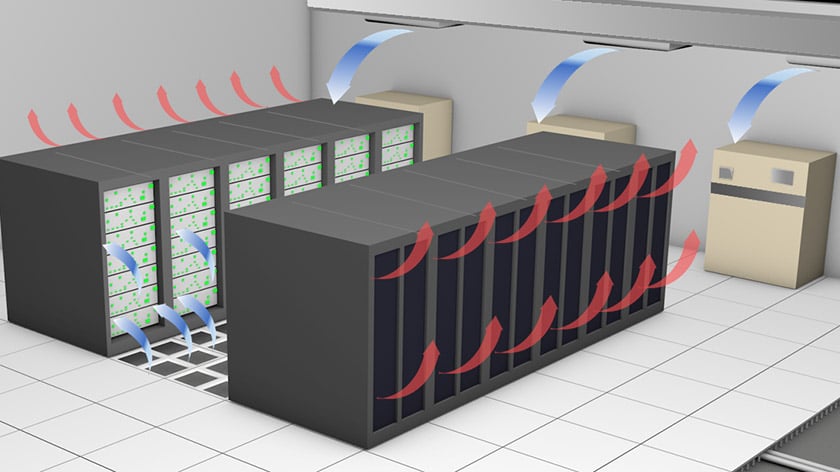Case Study: Environmental Monitoring Made Easy
When your existing monitoring devices are not keeping up with new demands, it’s time for a change. But upgrading monitors in a facility can be...
3 min read
![]() Packet Power Team
:
Mar 17, 2022 8:14:00 AM
Packet Power Team
:
Mar 17, 2022 8:14:00 AM
![Using Temperature Sensor Data to Drive Business Decisions [VIDEO]](https://www.packetpower.com/hubfs/Blog/using%20temp%20sensors.jpg)
To make the best business decisions around temperature and energy use, you need to have the data points. Advances in sensors and wireless technology mean today’s devices are small enough to be placed almost anywhere and are able to give you temperature (and other environmental condition data) in real-time.
Packet Power initially developed environmental monitors for data centers. They are designed to make large facilities “smarter” by delivering ten to ten thousand data points wirelessly. Data center managers use them to locate hotspots, track relative humidity levels, and reduce cooling costs. But environmental monitors are not just for data centers. Savvy businesses use remote temperature sensors to solve all sorts of problems related to temperature monitoring in facilities around the world.
As more and more crops are cultivated indoors in temperature-controlled areas, it’s critical to have real-time data on environmental conditions. This can businesses make decisions around heating, cooling, humidity levels, and airflow.
Hydroponic agriculture best practices now include using multiple sensors spread throughout the growing space to prevent “microclimates” that can result in uneven plant growth.
Cannabis growers are using temperature sensors that feed data to their smartphones. During the summer, they let in outside air overnight when external temperatures are lower to reduce their cooling costs.
Temperature monitors can help with keeping food safe from harvest, to storage, to transportation, to preparation. Many large restaurant chains have strict requirements around food storage. Wireless temperature sensors deliver data to reassure managers that fridges, freezers, and chillers are all functioning properly.
Grocers, warehouses, and distribution centers also rely on temperature sensors when it comes to food storage. By placing monitors inside and outside of chilled storage spaces they can identify where the valuable cold air is escaping. Building out a network of devices in these buildings allow facility managers to optimize their HVAC usage and control costs while ensuring food is kept in the optimal conditions.
Foods that are best enjoyed after some aging -- cheese, wine, and bourbon to name a few -- all have their favorite temperatures. Sensors that offer remote monitoring can act as another layer of security to ensure aging spaces are kept within the correct temperature and humidity ranges.
Many manufacturing processes require keeping critical equipment at just the right temperature to ensure optimal operation. A company that makes car seats found they were constantly blowing fuses on the production floor. By installing temperature sensors they could see where machines were overheating and causing the problems.
Some raw materials used in manufacturing must also be kept within prescribed temperature ranges. Wireless temperature monitoring can provide an extra level of product security and quality control in these scenarios.
Offshore oil rigs can be volatile environments where excessive heat can be life-threatening. Temperature sensors on multiple levels of the platforms can add an extra layer of safety and alert workers to dangers before they lead to disasters.
Telecommunications providers have their own power stations to keep communication towers functioning even when there is a loss of power in the area. Anywhere power is being produced, too much heat can be a problem. Temperature monitors give remote visibility into these critical facilities.
Labs that handle test samples and run experiments must be kept at a consistent temperature to avoid contamination by things like microbes and bacteria. The field of cryogenics relies on extreme cold being strictly maintained at all times. Temperature sensors offer an important backup and extra data points when a room's thermostat is simply not enough.
Chemistry is heavily reliant on temperature controls - even for the storage of materials. Plus, many flammable liquids like alcohols, esters, ethers, and ketones will catch fire above 38℃ (100℉). This means the redundancy offered by temperature sensors makes a lot of sense in many scientific settings.
Wastewater treatment facilities often rely on microorganisms to help purify water. These bacteria function best at temperatures between 20-35℃ (68-95℉). Monitoring these facilities is critical to public health.
Campuses, both collegiate and corporate, that consist of many buildings can benefit from remote temperature monitoring. Sensors help institutions ensure highly trafficked living and working spaces are comfortable during peak usage hours. The temperatures can then be turned up (or down) at night to reduce unnecessary HVAC expenses. This is a common practice in large working spaces like call centers.
At the same time, temperature monitors installed in building server rooms can ensure computing equipment is at the optimal temperature to maximize performance and extend product life without over-cooling.
Temperature extremes and fluctuations in humidity can wreak havoc on delicate and sometimes priceless valuables. Art museums are generally kept slightly cooler 18-20℃ (65-68℉) in order to preserve the works on display. It’s a careful balance ensuring the art’s integrity and making sure visitors aren’t too cold. Temperature sensors can help.
Temperature sensors also give collectors and curators a little more peace of mind. Interesting fact: The correct temperature to preserve mummies is 10-15℃ (50-59℉) while books require 20-22℃ (68-72℉).
As the world moves to using less energy, getting precise and regular data on temperature is important in more industries than ever before. There are estimates commercial environmental monitoring will grow by 11% a year over the next decade. Packet Power is a leader in developing technology to collect and transmit environmental data wirelessly. This video shows how simply and quickly an environmental monitor can be installed and begin transmitting data.
If better visibility into your environmental conditions and related energy use are your goals, we’d be happy to talk with you about how to achieve them.

When your existing monitoring devices are not keeping up with new demands, it’s time for a change. But upgrading monitors in a facility can be...
![Installing Packet Power Environmental Monitors [VIDEO]](https://www.packetpower.com/hubfs/Blog/Packet%20Power_%20Environmental%20Monitor.jpg)
Monitoring the environmental conditions (temperature, humidity, and differential air pressure) anywhere is a breeze with Packet Power devices. They...

Cooling costs are a major component of data center operating costs. The economic and environmental benefits that can result from lowered cooling...